SpaceX blasts Dragon capsule away from pad, testing rescue system
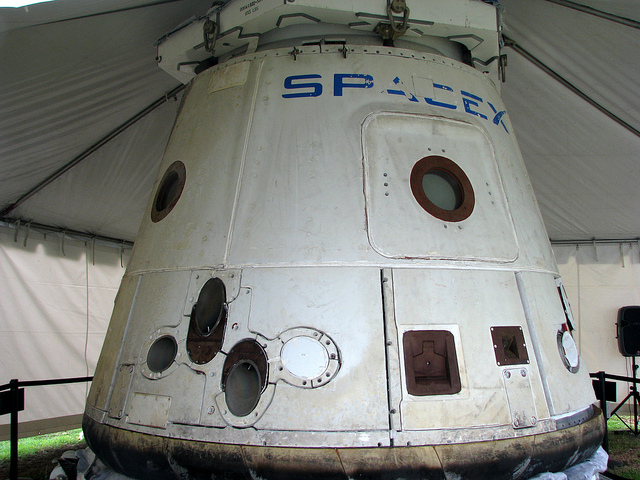



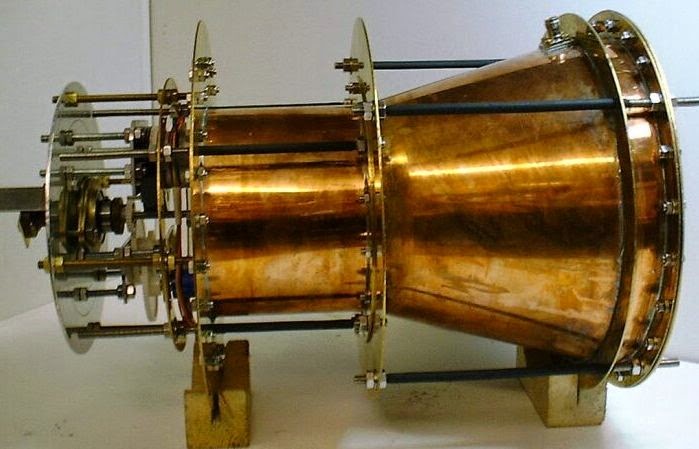
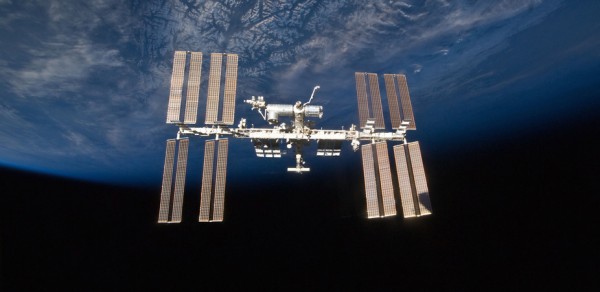
The unfortunate loss of the Russian Progress M-27M cargo vessel destined for the International Space Station (ISS) has highlighted the interdependence of the US and Russia in the project.
Despite such setbacks, this co-operation is to be welcomed by the international community. The ISS is probably the most complex and costly international infrastructure project ever undertaken. The 15 partners in the program have recently agreed to extend its operating life until 2024. It had earlier been slated for an end-of-life date of 2020.
Recent reports also suggest that the US and Russia are discussing the construction and operation of a new space station. This, presumably, would continue and extend the scientific and research activities of the current ISS.

NASA s Marshall Space Flight Center, CC BY-SA
These developments stand in marked contrast to the current state of relations between the two countries on more Earthly matters.
The events in Ukraine over the past 18 months have exacerbated an already tense co-existence between Moscow and Washington.
Russia wishes to (re)assert itself in a context of what it sees as a US-led NATO strategy to extend its activities and support, even to the borders of Russia itself.
For its part, the US views Russia as increasingly non-democratic and aggressive, yearning for its previous broad sphere of influence.
There is no doubt that the optimism of the early 1990s regarding the relationship between these Cold War protagonists has dissipated. What’s more, it is by no means clear as to how exactly this trend can be reversed or even halted.
This is where the impact of their outer space co-operation may help. The US and Russia (and previously the USSR) have always been the major space superpowers. Others (particularly China) are now joining their ranks.
The launch of Sputnik 1 by the USSR in October 1957, the first human-made object to orbit the Earth, heralded the dawn of the space age. It also led to the development of important principles for the legal regulation of the use and exploration of outer space.
International laws, developed largely through a United Nations-sponsored process, provided the framework by which the standard of living for all humanity has significantly improved. This is through services such as satellite telecommunications, global positioning systems, remote sensing technology for weather forecasting and disaster management and satellite television broadcast.
The prospects for future outer space activities offer tremendous opportunities for humankind, and a continued and enhanced co-operative ISS program will play an important role in this regard.
A crucial element underpinning the legal regulatory framework was the avoidance of armed conflict in outer space. The space race emerged at the height of the Cold War, when both the US and the USSR were flexing their respective technological muscles.
Military and strategic considerations were the driving force for the development of space-related technology. This was a period of considerable tension, with the possibility of large-scale and potentially highly destructive military conflict always lurking in the background.
Within this context, it was vital that international efforts were made to promote the peaceful uses of outer space.
A United Nations General Assembly Resolution, passed barely two months after the launch of Sputnik, emphasised:
[…] the common interest of mankind in outer space and recognizing that it is the common aim that outer space should be used for peaceful purposes only.
The United Nations Committee on the Peaceful Uses of Outer Space (COPUOS) was established in 1958 and now describes itself as “one of the largest Committees in the United Nations”.
Undoubtedly, space technology is being used for military purposes. The first Gulf War demonstrated the military value of space assets, such as satellites, and is often referred to as the first space war.
Space technology now forms part of the integrated battle platform for many countries. Space is often described as “congested, contested and competitive”, and military commanders consider that a hypothetical “day without space” – where a nation’s space assets would be disabled or jammed – would represent a national security catastrophe.
Nonetheless, the legal regime has thus far been remarkably successful in avoiding an actual war in space.
The UN Treaty rules confirm that outer space is not subject to ownership or territorial rights by prohibiting sovereign (or private) property claims.
This is a principle that not only reflects the practice of all countries from the beginning of the space age, but also represents an important proactive step designed to protect space from the possibility of conflict driven by territorial or colonising ambitions.
Undoubtedly, the ongoing development of technology and shifting nature of geo-political balances on Earth puts pressure on this extra-terrestrial status quo.
In January 2001, a commission headed by former US Secretary of Defence, Donald Rumsfeld, (in)famously warned of the possibility of a “Space Pearl Harbor” – a surprise attack on the space assets of the US during a crisis or conflict.
Such perceptions have driven a space arms race involving all of the major space powers. This is a worrying trend that must somehow be arrested.
Such issues fall outside of the self-imposed mandate of COPUOS, and have largely been left to the Conference of Disarmament. But this is an organisation that, in recent years, has had difficulty in even agreeing its agenda for discussion, let alone matters of substance.
Recognition of the fundamental sentiments of humanity that underpin international space law is therefore crucial in order to avoid the possibility of scenarios that do not bear contemplation.
The ISS project has brought together two of the world’s major powers in a co-operative venture that, despite some technical and financial problems, has provided a sense of hope about what the future holds for humankind.
The US and Russia are currently jointly engaged in the so-called “one-year mission”. An American astronaut and Russian cosmonaut will spend a period of one year aboard the ISS as part of a medical research project designed to provide further insights into the capacities of the human body to withstand the pressures of long-term space travel.
Despite the rhetoric and diplomatic manoeuvring on Earth, scientific co-operation between these two countries will, hopefully, continue in outer space. Of course, even these are, from time to time, affected by the machinations of terrestrial realpolitik.
But over the long term, both countries will hopefully come to the realisation that many of the very ambitious and potentially rewarding space activities that we currently can only dream of undertaking will require joint expertise, resources and co-operation.
And, along the way, one can only hope that maybe, just maybe, such extra-terrestrial co-operation can contribute to a greater sense of oneness on Earth.
![]()
Steven Freeland is Professor of International Law at University of Western Sydney.
This article was originally published on The Conversation.
Read the original article.
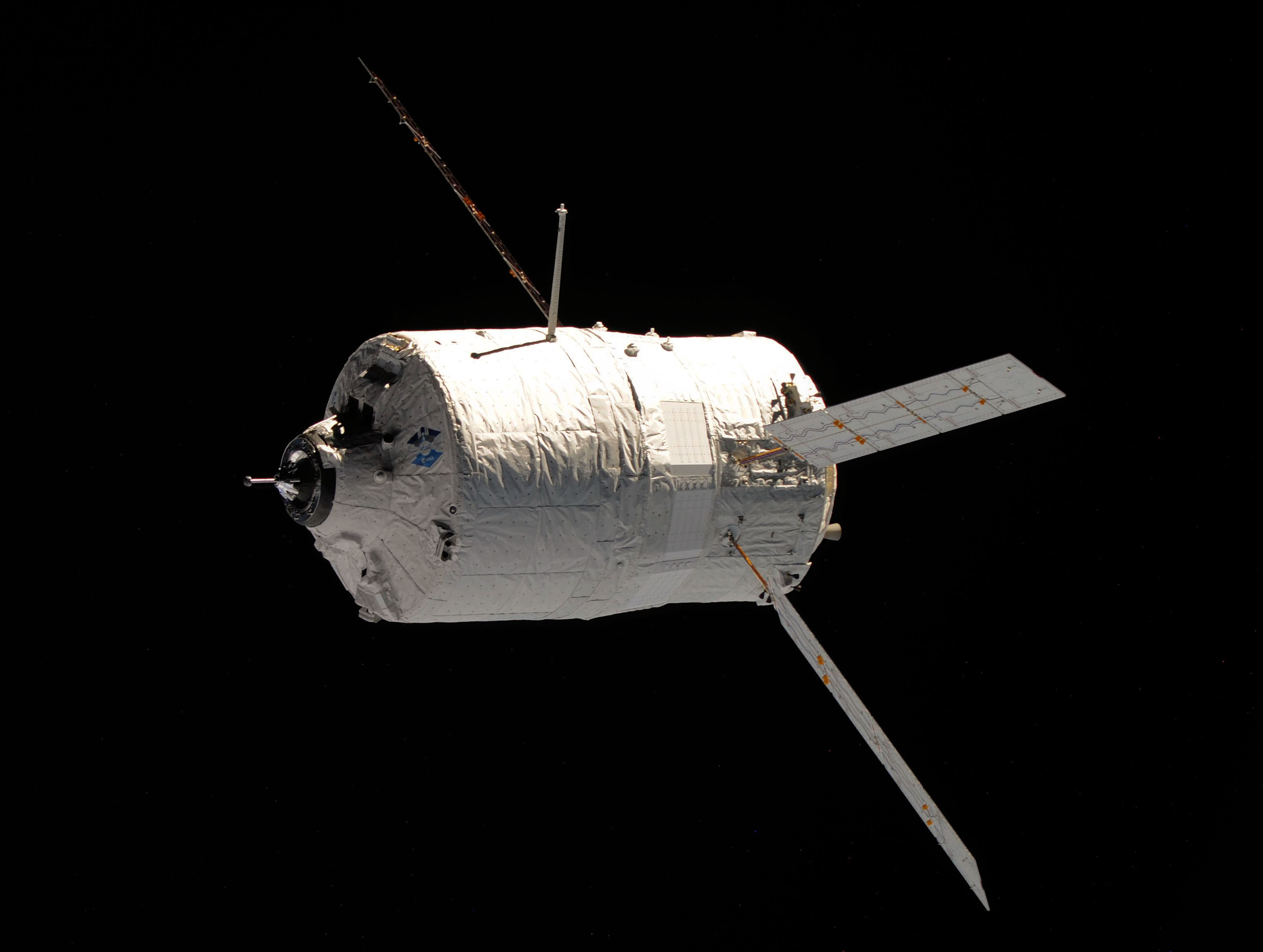
On Wednesday April 28, 2015 the Russian news media reported that a Russian spacecraft will crash into Earth’s atmosphere sometime next week. The spacecraft named Progress was launched on Tuesday but shortly after launching ran into some serious trouble. On top of ending up in the wrong orbit, Progress also entered an uncontrollable tailspin and though the Russian space agency has attempted to communicate with the spacecraft numerous times it has been unable to do so. According to a source from the factory that designed the craft the problem may have been due to the control device, which forced the engine to “overwork.”
The Russians launched Progress, which is an unmanned spacecraft, on Tuesday in an attempt to deliver supplies to the International Space Station. The unmanned spacecraft is filled with fuel, food, scientific equipment, and oxygen, but with it widely spinning out of control there is no hope it will ever reach its destination.
The Russian Space Agency tried unsuccessfully to establish contact with the spacecraft in an attempt to stop its spinning and put it back into the right orbit. Even if they were able to get the spacecraft into the proper orbit the uncontrollable spinning would present even more serious problems, as it would endanger the entire space station if they were to attempt to dock it manually.
Without control the Russian space agency’s options were limited. All they can do at this point is watch and see what happens. Experts believe that by no longer trying to commandeer the spacecraft that it will drop out of the current orbit and enter Earth’s atmosphere somewhere between May 5th and 7th. Upon entering our atmosphere only a small amount of debris will hit the planet, most of the spacecraft will simply burn up.
Reports first stated that Roscosmos had abandoned the spacecraft, but the Russians strongly denied this. However, according to the crew members, Russian Mikhall Kornienko and American Scott Kelly, of the International Space Station who are currently carrying out a one year mission Russian flight controllers had given up trying to take back control of the unmanned spacecraft.
Scott Kelly doesn’t seem to concerned with this new development, as he feels strongly that the programs take these things into account when planning the mission. On the other hand Mikhall Kornbienko admits it is a concern, but he is pretty confident that everything ill continue to go as planned at the space station until the next shipment arrives. As of right now SpaceX, a private company, plans to send a load of supplies up in June. And, while it hasn’t been stated for sure the Russian Space Agency may decide to move up the date of their next scheduled shipment, which wasn’t supposed to launch until August 6, 2015.

There are thousands of satellites in Earth orbit, of varying age and usefulness. At some point they reach the end of their lives, at which point they become floating junk. What do we do with them then?
Most satellites are not designed with the end of their life in mind. But some are designed to be serviced, such as the Hubble Space Telescope, which as part of its final service was modified to include a soft capture mechanism. This is an interface designed to allow a future robotic spacecraft to attach itself and guide the telescope to safe disposal through burn-up in the Earth’s atmosphere once its operational life has ended.
Thinking about methods to retire satellites is important, because without proper disposal they become another source of space debris – fragments of old spacecraft, satellites and rockets now orbiting Earth at thousands of miles per hour. These fragments travel so fast that even a piece the size of a coin has enough energy to disable a whole satellite. There are well over 100,000 pieces this size or larger already orbiting Earth, never mind much larger items – for example the Progress unmanned cargo module, which Russian Space Agency mission controllers have lost control of and which will orbit progressively lower until it burns up in Earth’s atmosphere.

NASA
We don’t know exactly how many or where they are. Only the largest – about 10% of those fragments substantial enough to disable a satellite – can be tracked from the ground. In fact damage to satellites is not unknown, with Hubble and the Solar Maximum Mission (SMM) satellites among those to have coin-sized holes punched into them by flying debris. There is a risk that over the next few years there will be other, perhaps more damaging, collisions.
The soft capture mechanism was installed to prevent more space debris. Engineers worldwide are devising ingenious ways to try to limit the amount of debris orbiting the planet – for good reason. Predictions show that if we don’t tackle the problem of space debris then many of our most useful orbits will become too choked with flying fragments for satellites to safely occupy them.
At some point, there may be enough debris in a given orbit for debris-satellite collisions and debris-debris collisions to cascade out of control. This is known as the Kessler syndrome, as shown (in somewhat exaggerated fashion) in the film Gravity.
Given the degree to which we rely on satellites these days – for communication, GPS and time synchronisation, upon which in turn many vital services such as international banking rely – it’s crucial we prevent near-Earth space from reaching this point. And like it or not, one of the important steps required is to remove large defunct satellites that could become the source of many more chunks of debris.
Satellites such as the UK’s TechDemoSat-1 (TDS-1), which launched in 2014, are designed for end-of-life disposal. TDS-1 carries a small drag sail designed and built at Cranfield University that can be deployed once the satellite’s useful science life is over. This acts like a parachute, dragging the satellite’s orbit lower until it re-enters the atmosphere naturally and burns up high in Earth’s atmosphere.
TDS-1 is small enough to burn up – larger or higher satellites will require other ways of moving them away from the most important, valuable, and busy orbits. It’s possible, with enough fuel on-board (and all systems functioning after perhaps decades in space), for satellites to de-orbit themselves. Other, more exotic solutions include tug satellites using nets, tethers, and even high power lasers.

ESA
However, space debris isn’t just an engineering problem. Suppose Europe develops a tug satellite and tries to de-orbit old Russian satellites, or passes close to an active US spy satellite. Clearly this could get political. Simply put, we haven’t yet found a way to use space sustainably, and the problem is almost as complex as finding ways to ensure sustainable development on Earth. What we need are practical solutions – and soon.

NASA
So what will happen to Hubble, perhaps the most well-known case of a satellite that requires a retirement plan? One day, perhaps in the early 2020s, a small spacecraft will be launched to rendezvous with the space telescope. It will attach using the soft capture mechanism and then fire its engines to guide Hubble toward re-entry over the South Pacific. For a satellite as large as Hubble, it’s likely that some parts will survive re-entry so a large uninhabited region over the ocean is best suited to avoid risk of damage or casualties.
The re-entry can be tracked carefully from other satellites, aircraft, and ships – all will capture the moment that Hubble itself, having spent decades watching the heavens, will become a bright shooting star for other telescopes to capture. It somehow seems fitting that a mission as remarkable and long-lived as Hubble should itself end in a blaze of glory.
![]()
This article was originally published on The Conversation.
Read the original article.

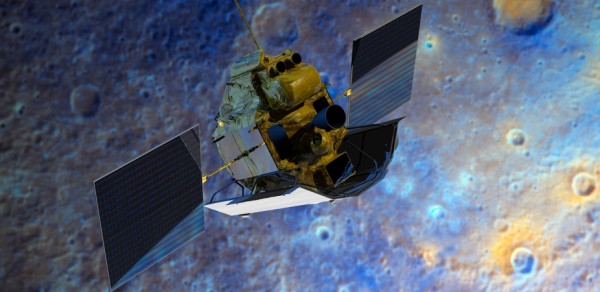
More than a decade after it left Earth, the space probe MESSENGER is in the dying days of its exploration of the planet Mercury.
The spacecraft is about to run out of fuel, and after a planned final manoeuvre on April 30, it will plummet into the surface of Mercury out of view of watchers on Earth but will remain in contact until 10 to 15 minutes prior to its demise.
Mercury is the smallest of the eight current solar system planets and the one nearest to our star. (Pluto was relegated to being a mere dwarf planet in 2006.)
Unlike the other well studied and photographed planets, Mercury has until recent times remained mostly unexplored.
The planet – just 57.9 million km from the sun – was first visited by NASA’s Mariner 10 probe which undertook three flybys of Mercury between March 1974 and March 1975.

NASA
The planet had to wait for more than 30 years before MESSENGER (MErcury Surface, Space ENvironment, GEochemistry and Ranging) completed its first flyby in January 2008.
Today you can even study its craters and other surface features using the Google Earth interface.
MESSENGER was launched on August 3, 2004, weighing 507.9kg, 1.42m tall, 1.85m wide, and 1.27m deep. It is powered by two body-mounted gallium arsenide solar panels and a nickel-hydrogen battery.
The probe carries a number of science instruments to map the surface of the planet and its magnetic field, detect atmospheric gases and various elements of Mercury’s crust, and much more.
After its launch, the spacecraft flew by Earth once (in 2005), Venus twice (in 2006 and 2007) and Mercury three times (twice in 2008 and once in 2009).
This multi-flyby process greatly reduced the amount of fuel needed to decelerate, although at the cost of increasing both travel time and distance.
Planets such as Venus and Mars have atmospheres that enable the minimisation of fuel by utilising atmospheric friction to enter orbit.
But Mercury’s atmosphere is far too thin for such manoeuvres. Using gravity assist manoeuvres at Earth, Venus and Mercury provided the necessary reduction in velocity enabling it to use its rocket engine when entering its elliptical orbit around Mercury.

NASA
The insertion into a highly elliptical orbit minimised the amount of fuel necessary and allowed time for the probe to cool down after passing between the planet and the sun.
It also allowed measurement of the effects of solar wind and Mercury’s magnetic field at varying distances, as well as capturing close-up measurements and photographs of the surface and exosphere.
After travelling 7.9 billion km and orbiting the sun 15 times MESSENGER entered Mercury’s orbit on March 18, 2011. The science instruments were reactivated on March 24 and the first photo from orbit was returned to Earth a few days later on March 29.

NASA
The MESSENGER flybys of Mercury in 2008 and 2009 were able to confirm the earlier Mariner 10 results that Mercury had an internal magnetic field and also to show that its magnetic dipole – which is just like a large bar magnet – is aligned to within 5° of the planet’s spin axis.
In an early flyby in 2008 there was a totally unexpected discovery that there were large amounts of water present in Mercury’s thin atmosphere. Visual evidence of past volcanic activity on the surface of Mercury and evidence for a liquid iron planetary core added to the incredible discoveries.
in November 2012, NASA announced, evidence of water ice and carbon-containing tar-like organic compounds molecules at both of Mercury’s poles. In these areas the deepest parts of the craters are always in shadow with temperatures reaching as low as -200C.
This discovery lends weight to the idea that Mercury, like the Earth, was bombarded by water-laden comets and mineral rich asteroids during the early years of the solar system.

NASA/Johns Hopkins University Applied Physics Laboratory/Carnegie Institution of Washington
The original mission was initially for a year and then extended to allow for observations of the predicted 2012 solar maximum.
The solar maximum is the period during the normal 11 year solar-cycle where the number of sunspots, solar flares and Coronal Mass Ejections are the highest. These are the major indicators of solar activity and MESSENGER was in a prime position to get information about the effects of increased solar activity.
In November 2013, Messenger was one of a number of spacecraft used to observe and photograph both Comet Encke (2P/Encke) and Comet ISON (C/2012 S1).
A second extended mission was scheduled to last through to March this year and has taken advantage of the probe’s orbital decay to obtain highly detailed close-up photographs of ice-filled craters and other landforms at Mercury’s north pole.
And so after a mission lasting almost 11 years the tiny robotic probe MESSENGER will end its mission on 30 April by crashing into the surface of the planet. Even then data will be gathered: the new man made crater the probe crash makes will hopefully provide new information for the NASA scientists. On its final orbit the probe will be only around 250 – 500 m above the surface at around 14,500km/hr.
NASA scientists will continue to gather data from MESSENGER until it finally succumbs to Mercury’s gravity.
This raises a question: just as comet and asteroid impactors may have delivered organic matter to their targets, what possible contaminants will this human-made visitor introduce?
Since 1958, with the increasing potential of discovering extraterrestrial life, there have been groups of scientists such as Committee on Space Research (COSPAR) examining the foundational ethical principles involved in the exploration of space.
In 2010, a workshop was convened to consider whether planetary protection measures and practices should be extended to protect planetary environments within an ethical framework that goes beyond “science protection”.
Previous planetary protection policy had been aimed at avoiding the contamination of planetary environments by biological contaminants or terrestrial microbes that could compromise current or future scientific investigations, particularly those searching for indigenous life.
Spacecraft have been crashed into a number of planets as well as our moon. So as we continue to send probes to the very edge of our solar system, perhaps we are seeding these worlds with the basic volatile elements that could in a distant future lead to the evolution of more advanced life forming.
Or perhaps as early settlers to foreign shores on Earth introduced diseases with devastating consequences, what effect could any nasty little hitchhikers have on the destiny of whatever life may already exist.
We now have detailed high-resolution maps of Mercury created from the hundreds of thousands of images taken by MESSENGER.

Credits: NASA/Johns Hopkins University Applied Physics Laboratory/Carnegie Institution of Washington
The launch of the European Space Agency’s BepiColombo planned mission to Mercury is planned to take place during a one-month long window from January 27, 2017.
This is a joint mission with the Japan Aerospace Exploration Agency (JAXA) and should enter Mercury orbit in January 2024 carrying two separate orbiters, the Mercury Planetary Orbiter (MPO) operated by ESA and the JAXA designed Mercury Magnetospheric Orbiter (MMO) carried by the Mercury Transfer Module (MTM).
One of its tasks will be to observe the 16m crater made by MESSENGER when it impacts at around 3.9 km/s (about 14,040 km/h). Scientists will be monitoring this fresh crater in order to identify the process of space weathering—the erosive effect of radiation and tiny meteorite strikes—in action.
![]()
This article was originally published on The Conversation.
Read the original article.
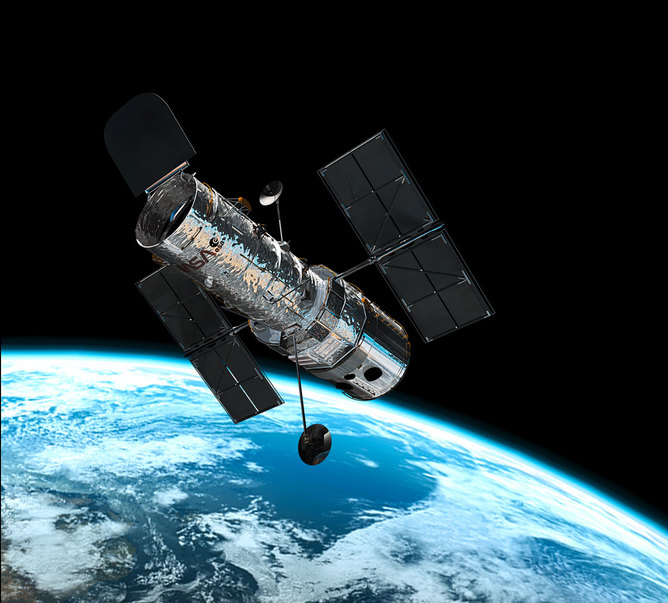
Observatories on Earth are cheaper than telescopes in space. They are also improving rapidly – when the European-Extremely Large Telescope starts its observations in nine years, it will be able to provide images 16 times sharper than those taken by the Hubble space telescope. But while it may seem hard to justify investment in space telescopes, the ground-breaking discoveries made by Hubble have taught us just how valuable they are.
Hubble, which was the world’s first space-based optical observatory, has made amazing discoveries in all aspects of astronomy, from flashes of aurora on planets and moons in our solar system to the evolution of galaxies billions of light years away.
Observations by Hubble helped determine the rate of expansion of the universe in a Nobel prize-winning study. We have witnessed stars being born in nurseries like the Eagle nebula and exploding as supernovae. Hubble has also captured a powerful jet emerging from a black hole at the centre of another galaxy.

ESA/Hubble & NASA, CC BY
These discoveries come at a price. The Hubble mission cost $1.5 billion at its launch in 1990 and the maintenance costs have also been sky-high. The eagerly-anticipated first pictures taken by Hubble were disappointingly blurry. The 2.4 m diameter mirror inside the telescope was slightly flawed so the light was not focusing correctly. Installation of an optics system to correct this problem was the target of the first Hubble servicing mission, carried out by space shuttle astronauts over five days of spacewalks in 1993. Four further servicing missions were carried out from 1997 to 2009 to upgrade and replace scientific instruments, power and guidance systems, and each mission had associated risks and expense. Since the end of NASA’s Space Shuttle programme there has been no way to carry out further servicing.
Space telescopes are not getting any cheaper. The successor to Hubble, the James Webb telescope, has been plagued by a number of delays and rising costs. As it prepares for launch in 2018, it will have cost about $8bn to build, launch and commission.
One significant advantage of building on the ground is that the size of the telescopes can be much larger than can be carried into space. Telescopes on our own planet have also made amazing discoveries, such as the Gemini telescope observing Jupiter’s two giant red spots brushing past one another in the planet’s southern hemisphere. The Keck observatory has detected water vapour in the atmosphere of a planet orbiting another star. The European Southern Observatory telescopes tracked stars orbiting the black hole at the centre of our galaxy to understand the formation of the stars and their interaction with the black hole.
However, ground-based telescopes aren’t cheap either. Work has already begun on the European Extremely Large Telescope, sited in Chile’s Atacama desert, with a cost estimated to be over €1 billion and with annual operating costs of €50m. But this is still less than Hubble and James Webb.

European Southern Observatory/flickr, CC BY-SA
When E-ELT observations start in 2024, the state-of-the-art correction for atmospheric distortion will allow it to provide images 16 times sharper than those taken by Hubble. With technological advancements like this it may seem hard to justify the expense and risk of future space-based telescopes.
However, the simple fact is that if we choose to only observe from the ground we will make ourselves blind to a wide variety of astronomical phenomena and potential discoveries. These include some of the universe’s most energetic events, such as gamma ray bursts.
The main reason for this is that the atmosphere of our planet does not hold back space telescopes. While the atmosphere lets through visible light, to which our eyes are sensitive, it absorbs light at some other wavelengths so we can never see it from the ground. In addition, turbulent motion in the atmosphere blurs the light travelling through it, causing objects to twinkle and appear fuzzy. Another problem with ground-based telescopes is that they are subject to local weather conditions, and high clouds can ruin the chance of making any useful observations.

ESO/G. Lombardi (glphoto.it), CC BY-SA
From its vantage point above the atmosphere, Hubble avoids these effects and can produce high-resolution images over a broad spectrum. The scientific value of these observations is evident in that applications by scientists for observing time on Hubble last year were oversubscribed by a factor of five. It has also been an important source of scientific papers. According to a survey by the European Southern Observatory last year, Hubble has produced between 650 and 850 papers per year since 2005 – which is far more than any of ESO’s ground-based telescopes.
The investment in astronomical telescopes, whether in space or on the ground, has to be justified by the scientific return – and in selecting new facilities it is fundamentally the science which drives the decision. Having worked with telescopes both on the ground and in space, I feel that science ultimately needs both. But in a world of limited funds we can’t have it all. International co-operation is therefore the key, whether it is about placing a new telescope in another country or providing an instrument for a mission led by another space agency.
The value of the observations made by telescopes based both on the ground and in space can be measured not just by the scientific results in understanding the near and far universe, but also in the inspiration that these images and discoveries provide.
![]()
This article was originally published on The Conversation.
Read the original article.